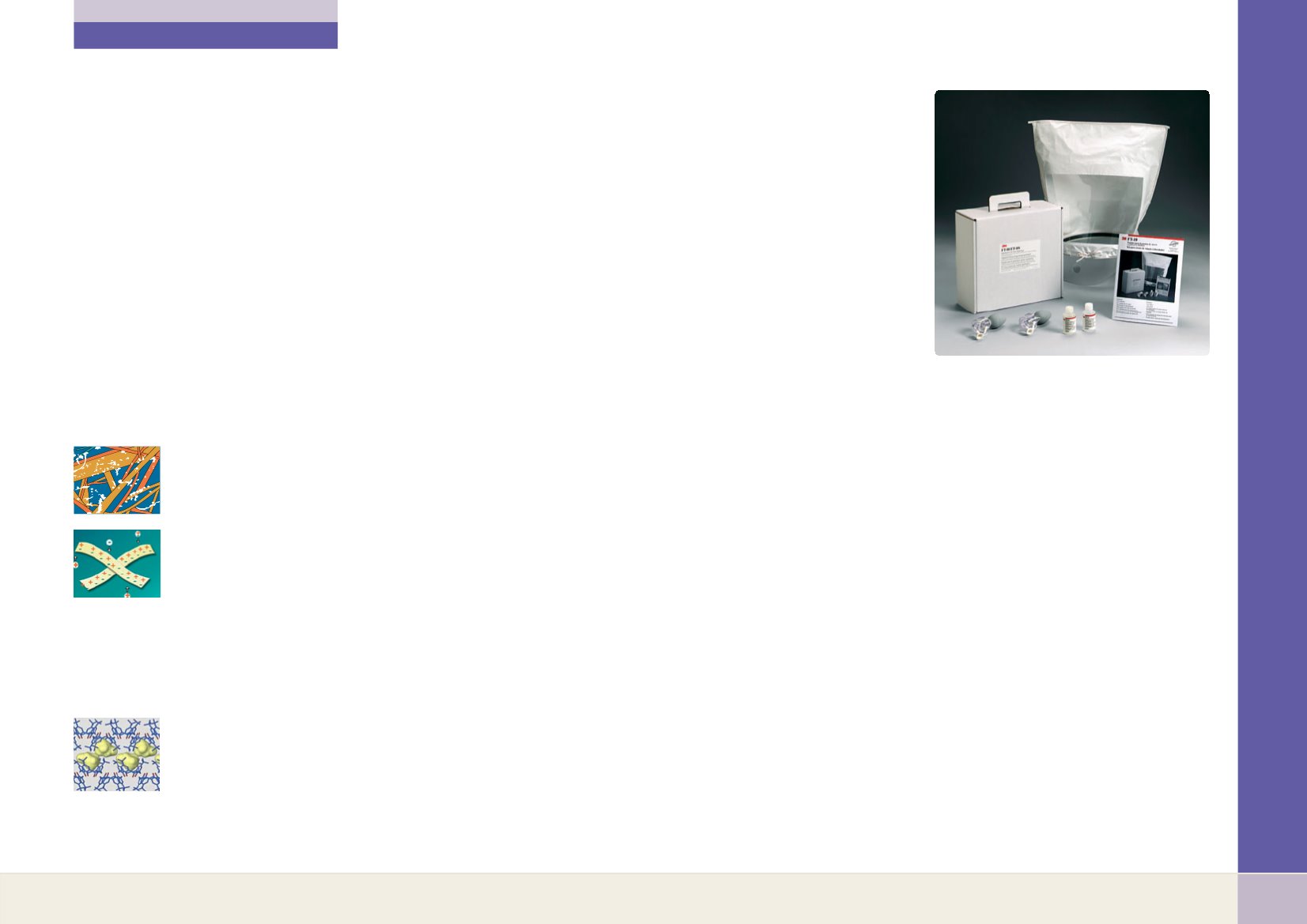

Personal Protective Equipment
P
t
E
87
www.technoavia.com www.technoavia.ruPrior to using filtering equipment for
respiratory protection the following con-
ditions are critical to be checked: compo-
sition, type, and properties of the harm-
ful substances in the production area
combined with oxygen concentration of
the inhaled air and work environment
conditions.
Basic types of hazards affecting respiratory
system organs include:
•
Aerosols;
•
Gases and vapors;
•
Lack of adequate oxygen supply.
The difference between PPE for respiratory
protection is defined by the difference in
physical characteristics of various substances
and by the ways these substances affect
human’s health.
Aerosols can be described
as particles weighed in
the air.
These can be fine
dust particles, liquid drops,
and suspensions. The parti-
cles are electrified by the
Earth’s magnetic field, thus
the respiratory PPE against
solid dust particles and
mists is based on electro-
static filtering.
Filtering equipment can ranges from a light
single use half-masks
(respirators) and
half-masks/full face masks
with isolated
face area and replaceable cartridge filters to
fully supplied air respirator
systems.
Gases and vapors
are both
gaseous substances that are
distinguished only by the way how the mole-
cules of each substance are formed.
Gas and vapor filtration is based on sorption.
Gases are chemically bonded. Some of the
respiratory PPE include coal filters impreg-
nated with relevant sorbents.
Lack of adequate oxygen supply is the
condition when environment’s oxygen
concentration is less than 17.5%.
Relatively small decrease in oxygen concen-
tration can cause somnolence while signifi-
cant decrease in oxygen concentration can
lead to loss of consciousness or fatality.
Filtering PPE is prohibited from use when
there is a risk of significant decrease of oxy-
gen concentration. Instead, only full face
masks and air supplied respirator systems
are allowed to be used in such environ-
ments.
Failure to use or improper use of respira-
tory PPE in hazardous environment may
lead to generation of professional
chronic diseases.
It is important to keep in mind that anti-
aerosol PPE does not protect against
gases and vapors, and PPE designed for
protection against gases and vapors
does not protect against aerosols.
Respiratory PPE’s lifetime is defined by
the following criteria:
•
Аnti-aerosol filtering half-masks can be
worn until the shortness of breath occurs;
•
Аnti-gas filters can be used until nuisance
and odors begin permeating through.
Key and necessary factors of reliable res-
piratory protection:
•
Technoavia’s technical experts can assist
you with proper selection of respiratory
PPE relevant to the type and concentration
of harmful substances.
•
PPE’s quality is proven by the manufac-
turer’s expertise and reputation.
•
All PPE range products offered by Tech-
noavia are properly certified.
•
Face-fitting is one of the key factors of
proper respiratory protection. A person can
inhale up to 100% of the unfiltered air if
there is a gap between face and a filtering
device.
How to achieve the best fit when wear-
ing protective respirators?
Employee should never underestimate the
importance of use of good quality and high
reliability respiratory PPE against environ-
mental risk factors.
Employees need to be trained on PPE don-
ning and doffing and correct fit check.
A respirator should have a nose clip, nose
clip liner, and adjustable head straps.
Respirator’s comfort is achieved by lower re-
sistance to breathing, good quality lining
material, and an exhalation valve.
Instructions for use materials should be eas-
ily accessible at an employee’s work place
and in changing rooms.
Suction should never be experience while a
respirator is on.
These factors should never be neglected:
Check for authenticity of the compliance
certificate.
Check for packaging quality. Damaged pack-
aging or non-authentic packaging can indi-
cate that a PPE has possibly been contami-
nated with risky substances.
Critical importance of Respiratory Protection
Respiratoric protection


















